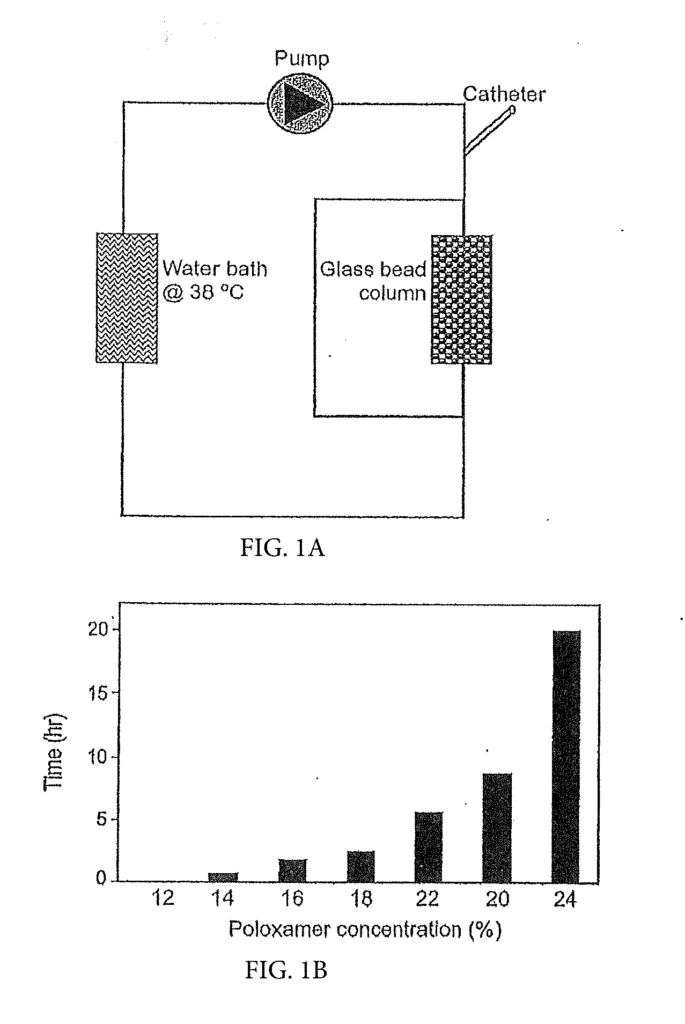Invented by Alexander Schwarz, Jean Raymond, Genzyme Corp
The market for temporary embolization using inverse thermosensitive polymers is gaining significant traction in the medical field. This innovative technique offers a minimally invasive solution for various medical conditions, particularly in the treatment of vascular disorders. The use of inverse thermosensitive polymers in temporary embolization procedures has shown promising results, leading to increased demand and market growth.
Temporary embolization is a procedure that involves blocking blood vessels or abnormal tissue growth to control bleeding, reduce blood flow, or treat tumors. Traditionally, permanent embolization materials such as coils or particles have been used. However, these materials can cause long-term complications and may not be suitable for certain patients or conditions.
Inverse thermosensitive polymers, on the other hand, offer a unique advantage in temporary embolization procedures. These polymers are liquid at room temperature but solidify when exposed to body heat. This property allows them to be injected as a liquid into the targeted blood vessel or tissue, where they solidify and create a temporary blockage. Over time, the polymers gradually degrade and are absorbed by the body, eliminating the need for additional removal procedures.
The market for temporary embolization using inverse thermosensitive polymers is driven by several factors. Firstly, the minimally invasive nature of the procedure attracts both patients and healthcare professionals. Compared to traditional embolization techniques, temporary embolization using inverse thermosensitive polymers requires smaller incisions, reduces the risk of complications, and allows for faster recovery times.
Moreover, the versatility of inverse thermosensitive polymers makes them suitable for a wide range of applications. They can be used in the treatment of vascular malformations, aneurysms, uterine fibroids, and even in the control of bleeding during surgeries. This broad application scope expands the potential market for temporary embolization using these polymers.
Another significant factor driving market growth is the increasing prevalence of vascular disorders and the demand for minimally invasive treatment options. Vascular diseases, such as arteriovenous malformations and uterine fibroids, affect millions of people worldwide. The ability of temporary embolization using inverse thermosensitive polymers to provide effective treatment with minimal invasiveness makes it an attractive option for both patients and healthcare providers.
Furthermore, advancements in polymer technology and manufacturing processes have contributed to the growth of this market. Ongoing research and development efforts are focused on improving the properties of inverse thermosensitive polymers, such as their degradation rate, mechanical strength, and biocompatibility. These advancements aim to enhance the safety and efficacy of temporary embolization procedures, further driving market growth.
In conclusion, the market for temporary embolization using inverse thermosensitive polymers is witnessing significant growth due to its minimally invasive nature, versatility, and increasing prevalence of vascular disorders. As technology continues to advance and more clinical evidence is gathered, this innovative technique is expected to become a standard treatment option for various medical conditions. The market potential for temporary embolization using inverse thermosensitive polymers is vast, offering immense opportunities for manufacturers, healthcare providers, and patients alike.
The Genzyme Corp invention works as follows
The present invention includes a method of embolizing the vascular site of a mammal by injecting into its vasculature a composition containing an inverse-thermosensitive polymer. This composition can be injected using a small needle, and gels at body temperature or lower. In some embodiments, the composition also contains a marker molecule such as a radiopaque or MRI-visible compound.
Background for Temporary Embolization using Inverse Thermosensitive polymers
Embolization
Poloxamers
Overview of Preferred Embodiment”.
A Preferred Embodiment
Inverse thermosensitive polymers
Embolization
Select Clinical Applications of Embolization
A. “A.
B. Thorax
C. Abdomen & Pelvis
Embolization Kits
Definitions
Methods of the Invention
EXEMPLIFICATION
Example 1
Polymer Formulation
Example 2
In Vitro Model for Temporary Embolization
Example 3
Temporary Embolization in Vivo
In Vivo Vascular Occlusion
Click here to view the patent on Google Patents.